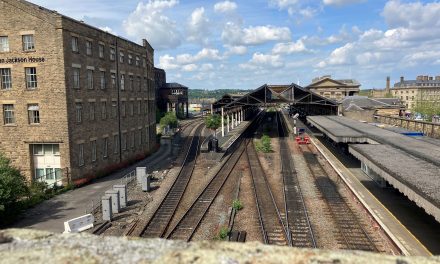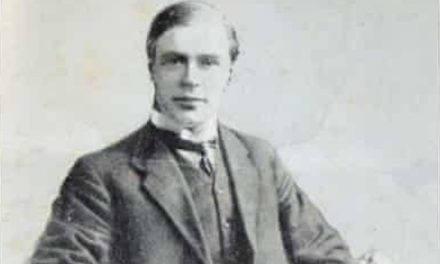By Vincent Dorrington
Few places in Huddersfield stir the memories more than the old Market Hall. When it was demolished in 1970 many shoppers felt Huddersfield’s heart had been ripped out.
It was thought that the town would never be the same again – that something irreplaceable had been destroyed, perhaps that modernity had gone too far. Not even its famous facade on King Street was preserved.
However, there are always two sides to a story. Supporters of the council’s decision to demolish the old Market Hall point out that this Gothic colossus no longer met the needs of a vibrant town.
Huddersfield was going through necessary major redevelopment in the 1960s and early 1970s. It was time to move on, they said – to leave the rats and cockroaches behind.
Whatever the case for its continued existence, the old Market Hall had always been the subject of controversy that divided opinions.

Charles II granted a royal charter in 1672 to John Ramsden, the Lord of the Manor of Huddersfield. Under the charter he was allowed to hold a market in Huddersfield in perpetuity.
This market met in the middle of Huddersfield by the market cross. For the next 200 years this proved to be Huddersfield’s main market.
‘The Shambles’ was located 100 yards down King Street and this acted as the main meat and poultry market for Huddersfield until the late 1860s.
During the 1860s there was much agitation in Huddersfield to demolish The Shambles and to build a new market. There were also widely held moral reasons for knocking down The Shambles.
Stocks had been placed there in the 1820s and it had become known as an area of crime and disorder. It was hoped a new market would contrast with ‘the roughness of the traditional market.’
In 1868 the new Borough Council of Huddersfield was full of civic ambition. It was determined to create a modern covered Market Hall that reflected the town’s civic pride.
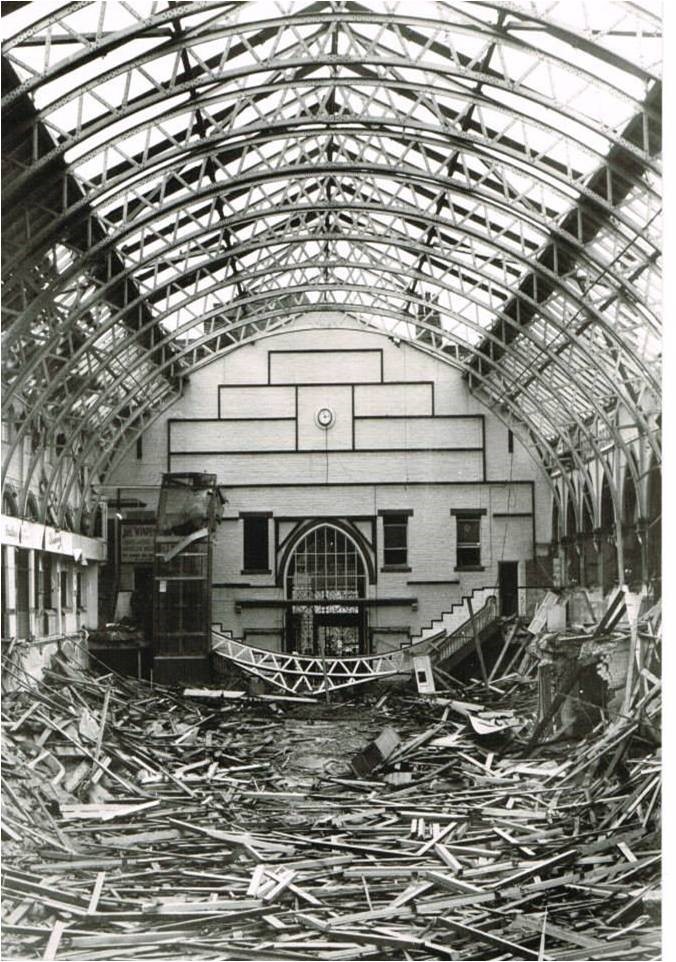
The new Victorian market answered the needs of its day. Huddersfield would now have a covered market dedicated to the needs of its growing population.
By 1876 the council acquired the rights from the Ramsden family to build a Market Hall. They initiated a competition for the best design for the new Market Hall.
Over 30 entries were received and in 1878 the Gothic design of local resident Edward Hughes was approved.
In 1878 the cornerstone was laid and by 1880 the new Market Hall was completed. The Cloth Hall had acted as a temporary market for two years until the new Market Hall was finished.
The Market Hall’s design was partly influenced by the building of the Crystal Palace with its iron girders and wrought iron lattice work supporting the glass structured hall. However, the exterior with its turrets and tower were purely Gothic. The great four faced clock tower would come to dominate the skyline of Huddersfield for some 90 years.
There were two levels to the market called top and bottom market. It was one of the few markets in the country to operate on two levels. The top market had permanent stalls for retail. The lower level of the market was meant for the sale of wholesale goods, especially fruit and vegetables.
By 1888 the wholesale market moved to Brook Street. The lower or bottom market then converted into a retail area.
When a major fire broke out in 1923, the bottom market took the shape that most Huddersfield people remember until its demolition in 1970.
It had grown from 72 stalls to over 150 stalls by the start of World War II. Some stalls no longer belonged to local families but to national chains like Marks & Spencer. Another sign of the market’s growing success was the fact that it was usually fully tenanted.
In the 1880s, no fewer than 31 of the old Market Hall’s 39 exterior shops were occupied by butchers and fishmongers.
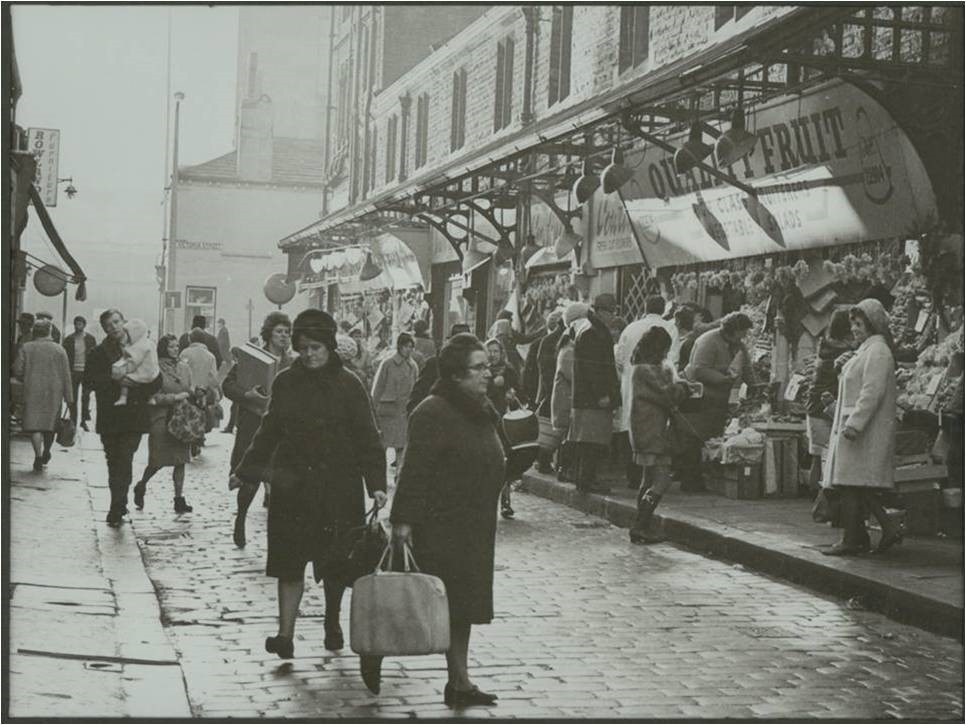

Over the years the tradition faded and by 1940, although the fishmongers remained, only six of the shops were trading as butchers.
A diversity of retailers had moved into the other outlets including a photographic dealer, a jeweller, two hardware dealers, several grocers, two gentlemen’s outfitters, two seeds men, a house furnisher and most memorably a dolls’ hospital.
It should be remembered that no supermarkets existed at the time and Huddersfield’s trade revolved around the old Market Hall.
Huddersfield Cine Club performed an act of huge historic significance in 1969 when they filmed the old Market Hall in colour.
The documentary filmed was entitled: ‘A Portrait of a Market.’ This film seemed to capture the old market in time and can now be seen on YouTube.
It vividly captures not only the structure of the old Market Hall but also the life and spirit of shoppers and stallholders.
Many stalls had been run by local people for generations. Minnie Fowler was 73 and still worked at the old Market Hall in 1970 – she started there when she was only 12.
Minnie remembered how two market managers used a slipper and belt on young pilferers in the boiler house.
Winpenny the tailors had started trading in the Market Hall in the 1880s. Four generations later it was still there in 1970.
Probably the most memorable scenes from the film was of Huddersfield folk bustling around the barrel of Doctor Dan’s herbal elixir. They paid 4d a glass for its health-giving properties. This famed drink was first sold at the old Market Hall in 1900.
Other market shoppers will have their own memories of the old Market Hall. Many will remember the balconies and their railings which provided people with a bird’s eye view of shoppers in the lower market below. Many a boy would watch out for their favourite girl from there.
Some shoppers remember the ice cream parlours (like A’Gostino’s) where children were sometimes left under a watchful eye while their mothers did their shopping.
The octagonal clusters of stalls will also be remembered by many. Mrs Sheila Brown of Mount recalls lunchtime trips from her job at Kayes on King Street to the market for hot pies and mushy peas – many others followed her example.
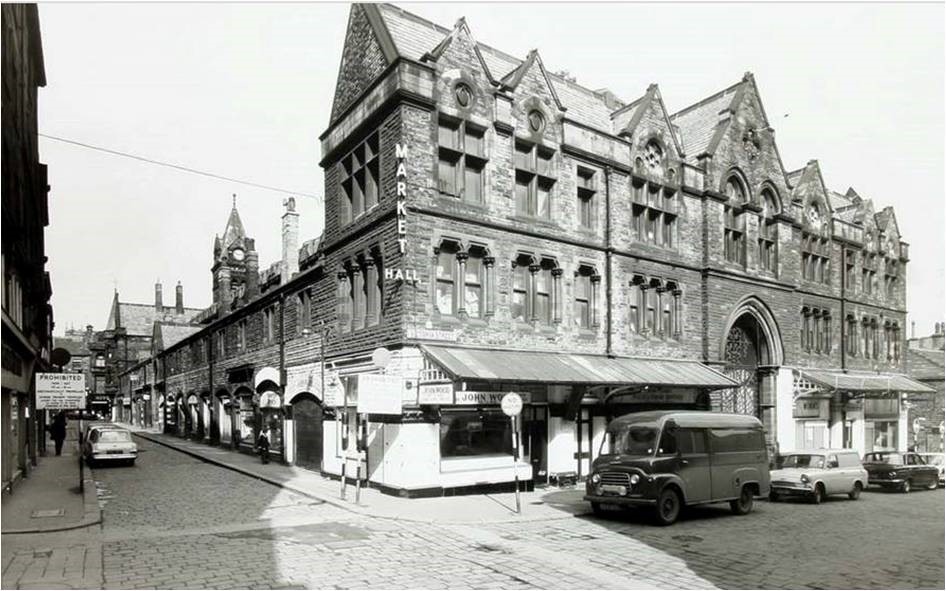
The old Market Hall had a way of doing things and had traditions that made it special. This was especially the case in Shambles. Shambles Lane was best known for its greengrocer shops. Mr and Mrs Huddersfield grabbed bargains at the end of the day when perishables were sold off.
But it was at Christmas that Shambles Lane came into its own. People flocked to buy Christmas trees from canopies. Holly and mistletoe were displayed in the brightly lit open fronted greengrocer’s shops.
Wilson’s, Cowling’s, Linden Smith’s and Howarth’s, all greengrocers and florists, trading from open fronted shops, will still be remembered affectionately by the older shoppers of Huddersfield.
At the other end of Shambles Lane were butchers’ shops full of turkeys, pies and joints of meat. There was no place like Shambles for Christmas cheer.
The old Market Hall closed on Easter Saturday, March 28 1970, despite many objections. The new market opened at Queensgate on the Piazza on Monday April 6.
After only 90 years of trading, the old Market Hall was then torn down. Tragically, two demolition workers were killed when the clock tower unexpectedly collapsed.
Later, it was reported that an army of rats were seen on King Street, abandoning the demolished site as they made their way to the canal at Aspley Marina!
Today there is little evidence of the old Market Hall. Boots the Chemist is on much of its site. Streets like King Street and Victoria Lane still remain but The Shambles is a covered walkway between Boots and WH Smith’s and bears no resemblance to its past.
Victoria Street is gone. It is to Victoria Lane that the only tangible part of the old Market Hall remains. The metal gate and plaque from the Victoria Lane entrance to the old Market Hall was salvaged before its demolition. They now reside at Shaw’s Pickles factory on Wakefield Road.
Leeds and Halifax still proudly possess their old market halls that give so much character to their towns. This is not the case for Huddersfield where the old Market Hall barely survives in living memory.
Most Huddersfield people are proud of the present outdoor and indoor markets. However, current plans to redevelop these markets as part of the town’s regeneration scheme is a concern for some traders and shoppers.
They fear that history has a way of repeating itself. Could these markets be under threat just as the old Market Hall had been? Only time will tell…










